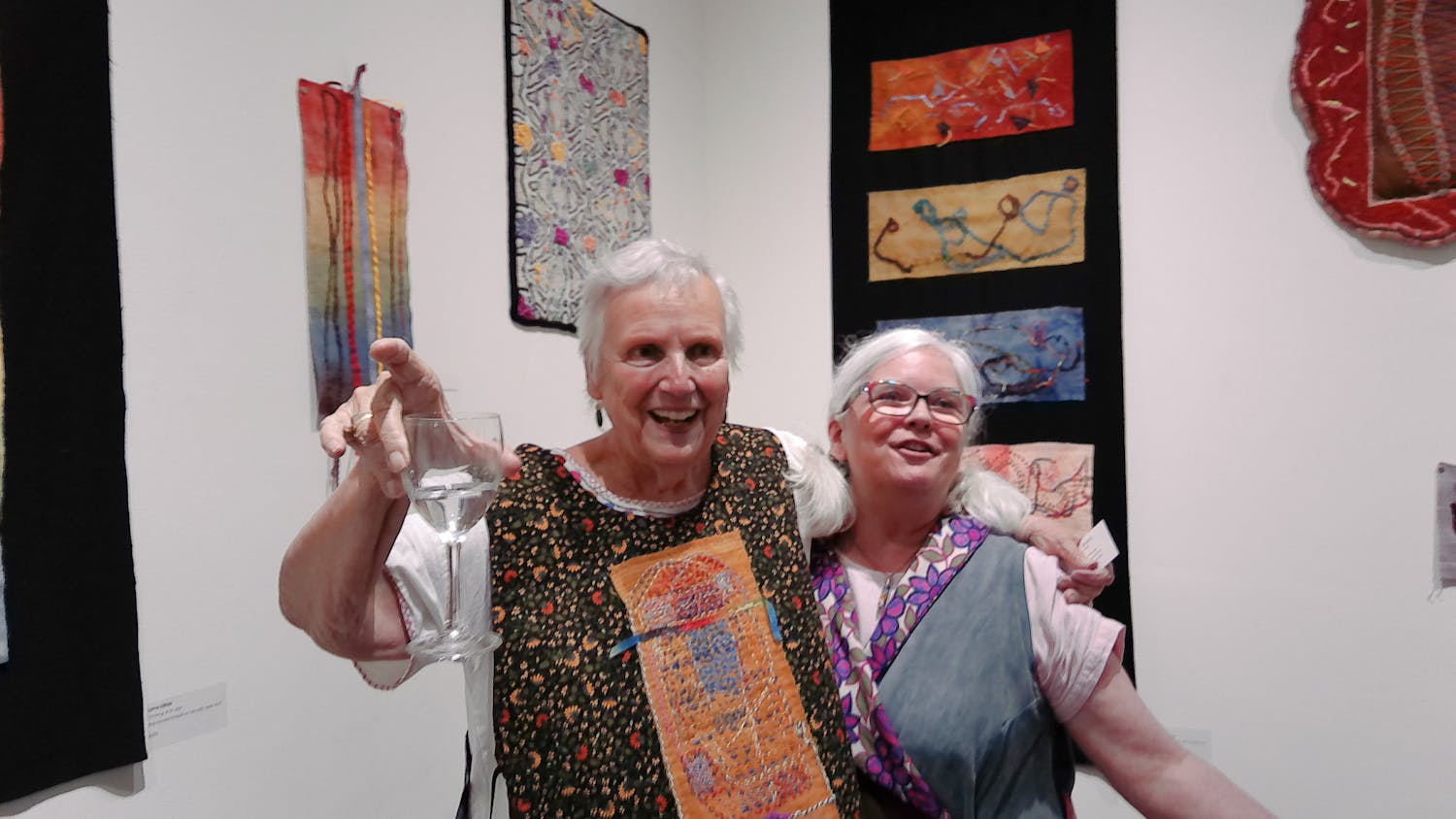Devin McGuire stands before a class of about 30 students at the Student Recreational Sports Center. The group has men and women, students and Bloomington residents, young and old alike. \nBarefoot and casually dressed, McGuire strides unassumingly across the room, greeting newcomers and passing out floor mats. His voice is soft and unpretentious. Even the muscle-bound men, who are wary of the class and whose eyes dart furtively around the room, seem to relax a bit.\nThat's McGuire's intention. He begins class with a simple question:\n"Why yoga?"\nThe class falls silent.\n"To relieve stress," one student remarks nearly inaudibly.\n"And why do you think yoga will help you do that?"\n"I don't know, it just seems healthier," the voice replies.\nMcGuire chuckles. "Indeed."\nHe goes on to describe the other physical benefits of yoga: Besides an improved mind-body connection, yoga has been often prescribed to aid back pain, heart problems, depression and other conditions. Because of its nonstrenuous nature, even novice exercisers safely practice the method. \nShoes begin to slip off as students sit cross-legged on soft mats, the sole equipment needed for traditional hatha yoga. A combination of poses designed to improve physical awareness, hatha yoga facilitates increased flexibility and muscle tone. \nThe precise chronological emergence of hatha yoga is debatable, but 5,000-year-old stone carvings depicting yoga positions exist in archeological sites in the Indus Valley. A collection of writings titled "Yoga Aphorisms," dating back to the first or second century B.C., is further indicative of yoga's prehistoric origins. \nAccording to the American Yoga Association, the manuscript details ashtanga yoga, a precise method containing eight steps: restraint, observance, physical exercises, breathing techniques, preparation for meditation, concentration, meditation and absorption. \nBut McGuire doesn't elaborate on the specifics; he instead instructs the students to lie flat on their backs, extending arms and pointing toes. \nStrolling quietly around the room, he then asks each individual to focus on the weight of his body on the floor, on the undeniable force of gravity. Closing their eyes, students begin to increase awareness of breath. McGuire next describes physiological processes involved with each inhale and exhale, asking each student to visualize perfect breathing technique.\n"Follow your breath," McGuire cautions. "It will lead you toward well-being."\nThe class continues with a series of both prone and standing poses designed to increase awareness of body symmetry and balance. Maintaining good breathing techniques becomes more difficult as students struggle to engage the "core" muscles of the abdominals and lower back, to concentrate on proper form.\nFreshman Liz Weikes, a participant with prior yoga experience, lauds the SRSC for incorporating mind-body techniques into its group exercise sessions. \n"As a gymnast for 15 years, maintaining flexibility is important," says Weikes. "When I was 16, I found that it was becoming more and more difficult to maintain the body needed to be a competitive gymnast. Yoga helped me maintain my proper physique and also relaxed me. Although I work out strenuously, I have found that yoga helps my body remain flexible."\nMcGuire has been teaching yoga at the SRSC since the program's inception four year ago. Buoyed by a career as a high school athlete, McGuire began reading yoga-related literature while attending IU during the 1970s. He began more rigorous study in the 1980s. In the early '90s, the yoga craze bombarded the United States. While there is no nationally recognized certification program for yoga instructors, the team leader, Cherry Darriau, is certified through a weekend program and conducts regular training sessions for SRSC instructors.\nA free shuttle runs to the SRSC from 5:30 to 10:30 each weeknight. The SRSC programs are seven weeks in duration. For a $25 fee, students may register for one of four possible days to attend the 75-minute class. A free "Yoga Sampler" class is also available for those with no prior experience. \nIndividuals with more extensive experience may register for Yoga II sessions, says Kimberly Ruff, director of marketing and sponsorship for the IU Division of Recreational Sports. These classes range from vigorous vinyasa, in which breathing is emphasized in a system of flowing movements, to intermediate yoga, which introduces more rigorous poses, to Himalayan yoga, an advanced study accentuating stress reduction and management.
Yoga
Stressed students free mind and body
Get stories like this in your inbox
Subscribe





